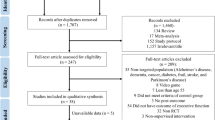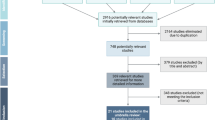Abstract
Objectives
To determine the association between plasma N-terminal pro-B-type natriuretic peptide (NT-proBNP) and intrinsic capacity in an older population.
Method
We recruited 283 participants aged 60∓97 years (mean 77.42±4.08 years). Intrinsic capacity was assessed with the World Health Organization Integrated Care for Older People (ICOPE) screening tool including six domains: cognition, locomotion, vitality, hearing, vision, and psychology. Multimorbidity, polypharmacy, gait speed, physical activity, lifestyles, and chronic inflammation were assessed. We used multivariate logistic regression and the Spearman’s correlation to assess the association between plasma NT-proBNP and intrinsic capacity.
Results
The average intrinsic capacity score was 4.53±1.34. The percentage of decreased intrinsic capacity was 75.3%. Participants with decreased intrinsic capacity were older, with more cardiovascular and cerebrovascular diseases and polypharmacy, and had lower gait speed and higher C-reactive protein. Plasma NT-proBNP was significantly higher in the decreased intrinsic capacity group (128.0[56.8∓280.8] pg/mL vs. 72.6[39.7∓120.0] pg/mL, p<0.001). Multivariate logistic regression analysis revealed that NT-proBNP was the only independent risk factor for decreased intrinsic capacity among multiple covariates (odds ratio=1.005, p=0.038). Elevated NT-proBNP levels were associated with abnormal locomotion, hearing, vision, and psychology domains. Additionally, NT-proBNP levels were inversely correlated with the intrinsic capacity score adjusted for both age and coronary artery disease (r=−0.371, p< 0.001).
Conclusion
Elevated NT-proBNP levels were associated with decreased intrinsic capacity in older persons, independent of age, multimorbidity, polypharmacy, and chronic inflammation. Further longitudinal studies are required to explore the predictive role of NT-proBNP on declines in intrinsic capacity.


Similar content being viewed by others
References
Jin HY, Liu X, Xue QL, Chen S, Wu C. The Association between Frailty and Healthcare Expenditure among Chinese Older Adults. J Am Med Dir Assoc 2020;21:780–785.
Xu W, Li YX, Wu C. Incidence of frailty among community-dwelling older adults: A nationally representative profile in China. BMC Geriatr 2019;19. doi:https://doi.org/10.1186/sl2877-019-1393-7.
Ma L, Li Z, Tang Z, Sun F, Diao L, Li J, He Y, Dong B, Li Y. Prevalence and sociodemographic characteristics of disability in older adults in China: Findings from China Comprehensive Geriatric Assessment Study. Arch Gerontol Geriatr 2017;73:199–203.
World Health Organization. Ageing and health. Available at: http://www.who.int/news-room/fact-sheets/detail/ageing-and-health. Accessed June 23, 2018.
WHO I Integrated care for older people (ICOPE): guidance for person-centred assessment and pathways in primary care. WHO. Available at: http://www.who.int/ageing/publications/icope-handbook/en/. Accessed July 2020;3, 2020.
Woo J. Frailty, Successful Aging, Resilience, and Intrinsic Capacity: a Cross-disciplinary Discourse of the Aging Process. Curr Geriatr Reports 2019;8:67–71.
Barreto P de S, Guyonnet S, Ader I, Andrieu S, Casteilla L, Davezac N, Dray C, Fazilleau N, Gourdy P, Liblau R, Parini A, Payoux P, Pénicaud L, Rampon C, Rolland Y, Valet P, Vergnolle N, Vellas B. The Inspire Research Initiative: A Program for Geroscience and Healthy Aging Research going from Animal Models to Humans and the Healthcare System. J Frailty Aging:2020;1-8.
Gutiérrez-Robledo LM, García-Chanes RE, Pérez-Zepeda MU. Allostatic Load as a Biological Substrate to Intrinsic Capacity: A Secondary Analysis of CRELES. J Nutr Heal Aging 2019;23:788–795.
Giudici KV, de Souto Barreto P, Guerville F, Beard J, Araujo de Carvalho I, Andrieu S, Rolland Y, Vellas B. Associations of C-reactive protein and homocysteine concentrations with the impairment of intrinsic capacity domains over a 5-year follow-up among community-dwelling older adults at risk of cognitive decline (MAPT Study). Exp Gerontol 2019; 127. doi:https://doi.org/10.1016/j.exger.2019.110716.
Cesari M, Araujo de Carvalho I, Amuthavalli Thiyagarajan J, Cooper C, Martin FC, Reginster J-Y, Vellas B, Beard JR. Evidence for the Domains Supporting the Construct of Intrinsic Capacity. Journals Gerontol Ser A 2018. doi: https://doi.org/10.1093/gerona/gly011.
Belloni G, Cesari M. Frailty and Intrinsic Capacity: Two Distinct but Related Constructs. Front Med 2019. doi: https://doi.org/10.3389/fmed.2019.00133.
Yao S, Guo J, Shi G, Zhu Y, Wang Y, Chu X, Jiang X, Jin L, Wang Z, Wang X. Association of BNP with Frailty in Elderly Population: Rugao Longevity and Ageing Study. J Nutr Heal Aging 2019;23:73–78.
Nishiguchi S, Nozaki Y, Yamaji M, Oya K, Hikita Y, Aoyama T, Mabuchi H. Plasma brain natriuretic peptide level in older outpatients with heart failure is associated with physical frailty, especially with the slowness domain. J Geriatr Cardiol 2016; 13:608–614.
Bronas U, Lindquist R, Treat-Jacobson D, Webb M. Inspiratory Capacity and NT-pro BNP Predict Key Cardiopulmonary Exercise Results but not Six-Minute Walk Test distance in Older Patients with Heart Failure. Hear Lung 2020;49:210.
Wang ZD, Yao S, Shi GP, Wang Y, Shi JM, Guo JH, Zhu YS, Jiang XY, Chu XF, Wang XF. Frailty index is associated with increased risk of elevated BNP in an elderly population: the Rugao Longevity and Ageing Study. Aging Clin Exp Res 2019. doi:https://doi.org/10.1007/s40520-019-01189-4.
Ma L, Wang J, Tang Z, Chan P. Simple Physical Activity Index Predicts Prognosis in Older Adults: Beijing Longitudinal Study of Aging. J Nutr Health Aging 2018;22:854–860.
Chan TC, Luk JKH, Chu LW, Chan FHW. Validation study of Charlson Comorbidity Index in predicting mortality in Chinese older adults. Geriatr Gerontol Int 2014; 14:452–457.
Ma L, Zhang L, Sun F, Li Y, Tang Z. Cognitive Function in Prefrail and Frail Community-dwelling Older Adults in China. BMC Geriatrics, 2019, 19(1):53.
Su P, Ding H, Zhang W, Duan G, Yang Y, Chen R, Duan Z, Du L, Xie C, Jin C, Hu C, Sun Z, Long J, Gong L, Tian W. The association of multimorbidity and disability in a community-based sample of elderly aged 80 or older in Shanghai, China. BMC Geriatr 2016;16:1–7.
Sheridan PE, Mair CA, Quinõnes AR. Associations between prevalent multimorbidity combinations and prospective disability and self-rated health among older adults in Europe. BMC Geriatr 2019; 19:198.
Beard JR, Jotheeswaran AT, Cesari M, Araujo De Carvalho I. The structure and predictive value of intrinsic capacity in a longitudinal study of ageing. BMJ Open 2019;9:e026119.
Acknowledgments
We thank Drs. Yumeng Chen, Yu Song, Ou Zhao, Bixi Li and Chuan Liu for their assistance in data collection, entry, and study coordination and all member of the team. We acknowledge all the people who participated in the study.
Funding
Funding: This work was supported by the following grants: National Key R&D Program of China (2018YFC1312001), the National Natural Science Foundation of Beijing (7202059), Beijing Municipal Hospital Scientific Research Training Project (PX2020036), and Milstein Medical Asian American Partnership Foundation Project Award in Geriatrics (2018).
Author information
Authors and Affiliations
Contributions
Author Contributions: LM contributed to the design of the work. LM drafted the manuscript and wrote it together with JC. YZ, PL, SL, YL, and TJ recruited the participants. LM, JC, LZ and YL contributed to the analysis and interpretation of data. All the authors contributed to writing the paper and revising it critically and gave final approval of this version.
Corresponding author
Ethics declarations
Conflict of interest statement: There are no ethical/legal conflicts involved in the article.
Ethical standards: The present study followed the ethical guideline of the declaration of Helsinki and was approved by the Ethics Committees.
Rights and permissions
About this article
Cite this article
Ma, L., Zhang, Y., Liu, P. et al. Plasma N-Terminal Pro-B-Type Natriuretic Peptide is Associated with Intrinsic Capacity Decline in an Older Population. J Nutr Health Aging 25, 271–277 (2021). https://doi.org/10.1007/s12603-020-1468-3
Received:
Accepted:
Published:
Issue Date:
DOI: https://doi.org/10.1007/s12603-020-1468-3




